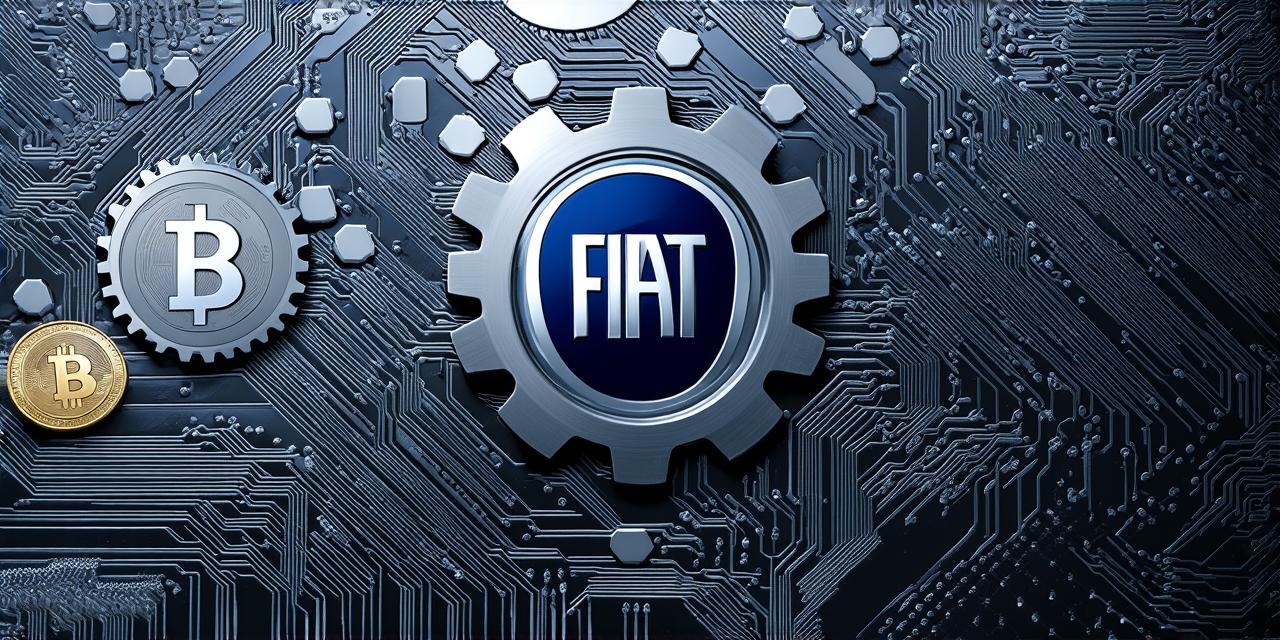Fiat currency, also known as fiat money, is a form of currency that is not backed by a physical commodity or a valuable asset. It is issued and controlled by the government and its value is based on faith and trust in the economy and government issuing it. Examples of fiat currencies include US dollars, Euros, and Japanese yen.
Fiat cryptocurrency, on the other hand, is a digital form of currency that is not tied to any physical commodity or asset. It is based on blockchain technology and is created and controlled by governments or private entities. The value of a fiat cryptocurrency is based on market demand and supply.
One of the main advantages of fiat cryptocurrencies is their ability to provide more flexibility and convenience for transactions, as they can be traded and exchanged quickly and easily. Additionally, fiat cryptocurrencies can be used to make purchases online or in person, making them a convenient option for businesses and consumers alike.
However, the use of fiat cryptocurrencies also carries some risks, such as volatility in value and the potential for fraud or scams. It is important to thoroughly research and understand the risks before investing in or using a fiat cryptocurrency.
In this article, we will explore the concept of fiat cryptocurrency and how it differs from traditional fiat currency. We will also examine some real-life examples of fiat cryptocurrencies and their potential use cases.
</!— This is another comment and will not appear on the webpage —>
What is Blockchain Technology?
Blockchain technology is a decentralized digital ledger that records transactions in a secure and transparent manner. It is the underlying technology behind many cryptocurrencies, including fiat cryptocurrencies.
The blockchain is made up of a series of blocks that contain information about transactions. Each block contains a unique code called a hash that links it to the previous block, creating a chain of blocks that cannot be altered or deleted. This makes the blockchain a secure and tamper-proof way to record and verify transactions.
The decentralized nature of the blockchain means that there is no central authority controlling it, making it more resistant to fraud and hacking. Additionally, the transparency of the blockchain allows for all participants to see the same information, increasing trust and reducing the potential for fraud.
</!— This is another comment and will not appear on the webpage —>
What are Fiat Cryptocurrencies?
Fiat cryptocurrencies are a type of digital currency that is not tied to any physical commodity or asset. They are created and controlled by governments or private entities and their value is based on market demand and supply.
The first fiat cryptocurrency was Bitcoin, which was introduced in 2009. Since then, many other fiat cryptocurrencies have been created, including Ethereum, Ripple, and Litecoin. These fiat cryptocurrencies use blockchain technology to record transactions and maintain their value.
Fiat cryptocurrencies can be traded and exchanged like traditional currencies, but they also carry some unique advantages and risks. Some of the main benefits of fiat cryptocurrencies include:
- Speed and Convenience: Fiat cryptocurrencies can be transacted quickly and easily, making them a convenient option for businesses and consumers.
- Lower Costs: Transactions using fiat cryptocurrencies are often faster and cheaper than traditional currencies, as they do not require intermediaries such as banks.
- Increased Privacy: Fiat cryptocurrencies can provide a level of privacy and anonymity that is difficult to achieve with traditional currencies.
However, fiat cryptocurrencies also carry some risks, including:
- Volatility in Value: The value of fiat cryptocurrencies can be highly volatile, making them a risky investment for those who are not familiar with the market.
- Potential for Fraud and Scams: Fiat cryptocurrencies are still a relatively new technology, and there is a high potential for fraud and scams. It is important to thoroughly research and understand a fiat cryptocurrency before investing in or using it.
</!— This is another comment and will not appear on the webpage —>
Real-Life Examples of Fiat Cryptocurrencies

There are many fiat cryptocurrencies that are currently in use, each with its own unique features and potential use cases. Here are some real-life examples:
- Bitcoin (BTC) – The first fiat cryptocurrency, introduced in 2009 by an anonymous person or group of people using the pseudonym Satoshi Nakamoto. Bitcoin is the most widely known and used fiat cryptocurrency, with a market capitalization of over $1 trillion as of October 2021.
- Ethereum (ETH) – A fiat cryptocurrency that uses smart contracts to enable decentralized applications. Ethereum has a market capitalization of over $450 billion as of October 2021 and is used in a variety of industries, including finance, gaming, and supply chain management.
- Ripple (XRP) – A fiat cryptocurrency that uses blockchain technology to enable fast and low-cost cross-border payments. Ripple has a market capitalization of over $120 billion as of October 2021 and is used by banks and financial institutions around the world.
- Litecoin (LTC) – A fiat cryptocurrency that uses blockchain technology to enable fast, low-cost transactions. Litecoin has a market capitalization of over $55 billion as of October 2021 and is used in a variety of industries, including e-commerce and gaming.
</!— This is another comment and will not appear on the webpage —>
FAQs
What is the difference between fiat currency and fiat cryptocurrency?
Fiat currency is a form of currency that is not backed by a physical commodity or asset. It is issued and controlled by governments and its value is based on faith and trust in the economy and government issuing it. Fiat cryptocurrency, on the other hand, is a digital form of currency that is not tied to any physical commodity or asset. It is based on blockchain technology and is created and controlled by governments or private entities. The value of a fiat cryptocurrency is based on market demand and supply.
What are some potential risks associated with fiat cryptocurrencies?
Fiat cryptocurrencies carry some risks, such as volatility in value and the potential for fraud or scams. It is important to thoroughly research and understand the risks before investing in or using a fiat cryptocurrency.
What are some real-life examples of fiat cryptocurrencies?
There are many fiat cryptocurrencies that are currently in use, including Bitcoin, Ethereum, Ripple, and Litecoin. Each has its own unique features and potential use cases.
